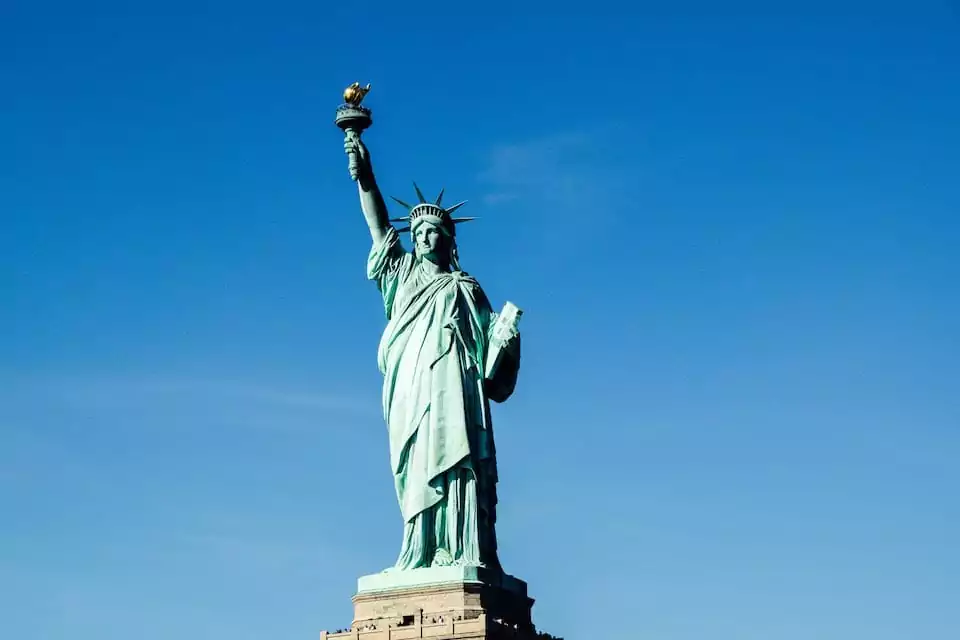New York City, often referred to as the “Big Apple,” is a vibrant and bustling metropolis that has captivated the hearts of travelers for generations. With its iconic skyline, diverse neighborhoods, world-class attractions, and a never-ending array of activities, it’s no wonder that NYC is a top destination for tourists from around the globe. However, before you embark on your journey to a city that never sleeps, there are several important things you should know to make the most of your visit. In this comprehensive guide, we’ll cover everything from navigating the city’s public transportation to discovering hidden gems and cultural nuances. So, grab a cup of coffee and get ready to dive into the essentials of traveling to New York City.
Plan Your Visit According to the Seasons

New York City experiences four distinct seasons, each offering a unique experience for travelers. Before you book your trip, consider the time of year that best aligns with your interests and preferences:
a. Spring (March to May): Springtime in New York City is a magical season. Cherry blossoms bloom in Central Park, and outdoor activities become more enjoyable as the weather warms up. It’s also a great time to explore museums and cultural institutions, as the city isn’t as crowded as in the summer.
b. Summer (June to August): The summer months are when NYC truly comes alive. You can attend outdoor concerts, take a stroll along the High Line, and enjoy open-air food markets. However, be prepared for high temperatures and humidity, so pack accordingly.
c. Fall (September to November): Fall foliage in Central Park and the surrounding areas is a sight to behold. This season is perfect for those who love cooler weather, fewer crowds, and the colorful transformation of the city’s landscapes.
d. Winter (December to February): If you’re a fan of holiday decorations, ice skating in iconic locations like Rockefeller Center, or cozying up in charming cafes, winter is the time for you. Just be prepared for cold temperatures and the possibility of snow.
Accommodation: Where to Stay

New York City offers a wide range of accommodation options to suit various budgets. However, keep in mind that lodging in NYC tends to be more expensive than in many other cities. Here are some popular areas to consider for your stay:
a. Manhattan: This is the most popular borough for tourists, with easy access to major attractions like Times Square, Central Park, and Broadway. Accommodation in Manhattan ranges from luxury hotels to budget-friendly hostels.
b. Brooklyn: Brooklyn offers a more laid-back atmosphere compared to Manhattan. You’ll find trendy neighborhoods like Williamsburg and DUMBO, as well as more budget-friendly lodging options.
c. Queens: Queens is known for its cultural diversity and is home to attractions like Flushing Meadows-Corona Park and the Queens Museum. It’s a more affordable option with excellent subway connections to Manhattan.
d. The Bronx and Staten Island: These boroughs offer more affordable accommodation options, but they are farther from Manhattan and may require longer commutes.
Getting Around: Public Transportation and Walking

New York City’s public transportation system is extensive and efficient, making it the preferred way to get around. Here are some key tips:
a. Subway: The NYC subway system is the quickest way to traverse the city. Purchase a MetroCard for unlimited rides during your stay or pay per ride. Be sure to check for any service updates or delays before heading out.
b. Buses: Buses are another option for getting around, especially in areas with limited subway access. Remember that traffic can be unpredictable, so plan your routes accordingly.
c. Walking: NYC is a pedestrian-friendly city, and walking is often the best way to explore neighborhoods like Greenwich Village or SoHo. Wear comfortable shoes, and always be mindful of traffic and crosswalks.
d. Taxis and Rideshares: While taxis are readily available, rideshare apps like Uber and Lyft are also popular choices. Keep in mind that traffic congestion can be an issue during peak hours.
Iconic Attractions and Must-See Sites

New York City is home to an abundance of iconic attractions. Here are some you won’t want to miss:
a. Statue of Liberty and Ellis Island: These symbols of freedom and immigration are accessible by ferry from Battery Park.
b. Empire State Building: Enjoy breathtaking views of the city from the observation deck of this iconic skyscraper.
c. Times Square: Experience the dazzling lights and energy of the “Crossroads of the World.”
d. Central Park: This sprawling urban oasis offers opportunities for picnics, bike rides, and leisurely strolls.
e. Broadway: Catch a world-class theater production in the heart of the theater district.
f. Museums: Explore the Metropolitan Museum of Art, the Museum of Modern Art (MoMA), and the American Museum of Natural History, among others.
Cultural Sensitivity and Etiquette

New York City is a melting pot of cultures, and respecting diversity is crucial. Here are some tips to keep in mind:
a. Tipping: Tipping is customary in restaurants, bars, and for services like taxis and haircuts. Standard practice is to tip 15-20% of the bill.
b. Queuing: Be patient when waiting in line, whether for food, transportation, or attractions. Cutting in line is considered rude.
c. Noise Levels: While NYC is known for its hustle and bustle, be mindful of noise levels in residential areas and hotels, especially during late hours.
d. Dress Code: NYC has a diverse range of dress codes, from casual to formal. It’s a good idea to research the dress code of specific venues before visiting.
Safety and Security

New York City is generally safe for tourists, but like any major city, it’s important to be aware of your surroundings. Some safety tips include:
a. Pickpocketing: Keep an eye on your belongings, especially in crowded areas and on public transportation.
b. Neighborhood Safety: Research neighborhoods before visiting, especially at night. Most tourist areas are safe, but it’s essential to exercise caution in less-traveled areas.
c. Emergency Services: Know the emergency numbers (911) and the location of the nearest police stations and hospitals.
d. Transportation at Night: Use reputable transportation options when traveling late at night, and try to stay in well-lit, populated areas.
Discovering Hidden Gems

While it’s great to explore the famous landmarks, don’t forget to seek out some of NYC’s hidden gems:
a. The High Line: This elevated park is a peaceful oasis above the city streets.
b. Smorgasburg: Enjoy a foodie’s paradise at this weekend food market with diverse culinary offerings.
c. Roosevelt Island: Take the Roosevelt Island Tramway for stunning views and a unique perspective of the city.
d. Cloisters Museum: Located in Fort Tryon Park, this museum features medieval European art and stunning gardens.
e. Chelsea Market: Explore this historic market for delicious bites, unique shops, and art installations.
Budgeting and Expenses

New York City can be an expensive destination, so it’s essential to plan your budget carefully:
a. Accommodation: Accommodation costs can vary greatly depending on your choice. Look for deals, book in advance, or consider alternatives like Airbnb.
b. Dining: Dining out in NYC can be pricey, but you can find budget-friendly options like food trucks, delis, and affordable eateries in various neighborhoods.
c. Entertainment: Consider purchasing attraction passes like the CityPASS or Explorer Pass for discounts on multiple attractions.
d. Shopping: NYC is a shopper’s paradise, so set a shopping budget to avoid overspending.
Conclusion
New York City is a city of dreams and possibilities, where every corner holds a new adventure. By planning ahead, staying mindful of cultural norms, and exploring both the iconic landmarks and hidden gems, you can make the most of your visit to this vibrant metropolis. Embrace the energy of the city, savor its diverse cuisine, and immerse yourself in its rich cultural tapestry. Whether you’re a first-time visitor or a returning traveler, New York City never fails to leave an indelible mark on your heart.

